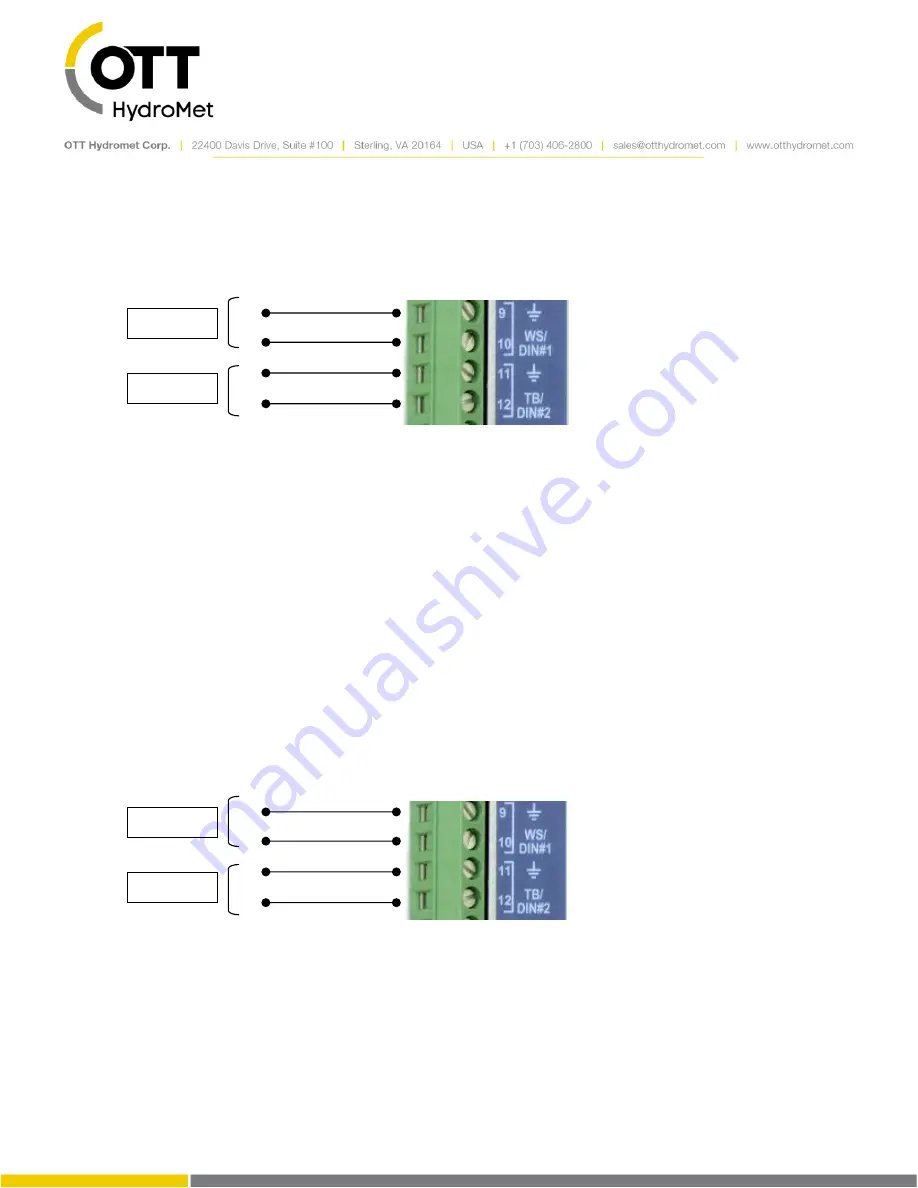
Page
35
of
248
actively puts out pulses to represent the value to be measured. Pulses are measured by the Digital inputs
DIN#1 or DIN#2. Output can be counted at a rate up to 10,000 counts per second (de-bounce off). If the
signal provided by the device is not clean, de-bouncing should be enabled. Otherwise, noise may be
counted as signal. To ensure that the de-bouncing does not interfere with the pulse counting, de-bouncing
should only be enabled for signals occurring less than 100 times per second.
The key settings for pulse sensors are:
Measurement Type: Digital
Digital type: Counter 1 or Counter 2
Debounce: yes/no
5.9
Connecting Frequency Sensors
Up to two sensors with frequency output are supported. The pulse output can come from a switch that is
momentarily closed as in most flow meters and tipping buckets, or it can come from a device that actively
puts out pulses to represent the value to be measured such as a soil moisture probe with frequency
output or an anemometer.
The pulse output sensors connect to the DIN #1 or DIN #2 inputs. DIN #1 supports sensors with a low-level
AC output (100 mV peak-peak) or high-level output while DIN#2 supports only sensors with a high-level
output (switch closure, 0-3VDC, or 0-5VDC).
The frequency measurement circuitry can measure frequencies from 3Hz to 10KHz with an accuracy of
0.01%. The system takes 0.75 seconds to make the measurement.
The key settings for frequency sensors are:
Measurement Type: Digital
Digital type: Frequency 1 or Frequency 2
Note: Use Frequency 1 for sensors with a low-level AC output voltage (such as an RMYoung) and
specify (AC Low Level). Frequency 2 is always expecting a DC high-level signal.
DIN#1
DIN#2
DIN#1
DIN#2
Содержание SUTRON XLINK 100
Страница 1: ...Operations Maintenance Manual SUTRON XLINK 100 500 Part No 8800 1217 Rev 8 44 4 January 14 2022...
Страница 230: ...Page 230 of 248...
Страница 247: ...Page 247 of 248...
















































